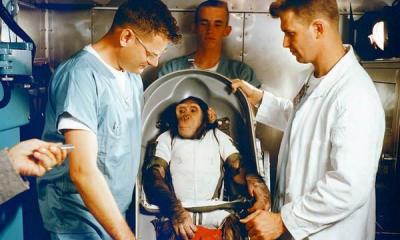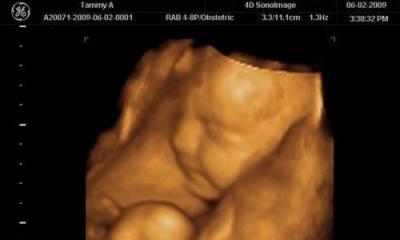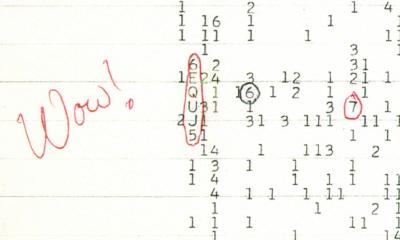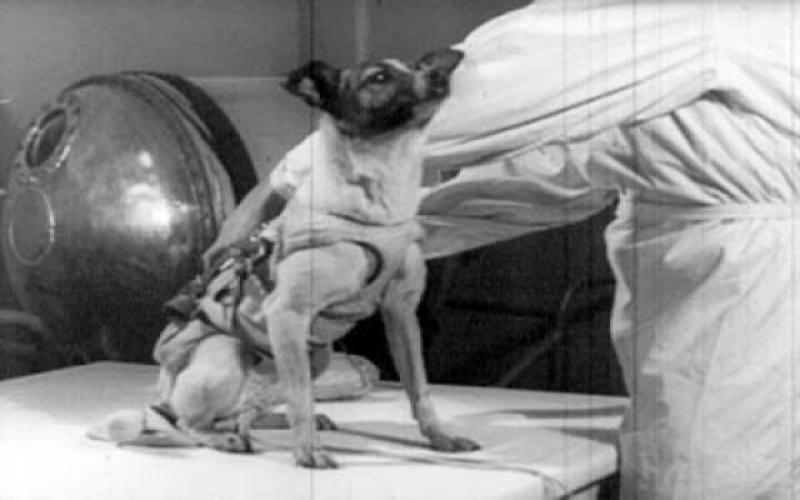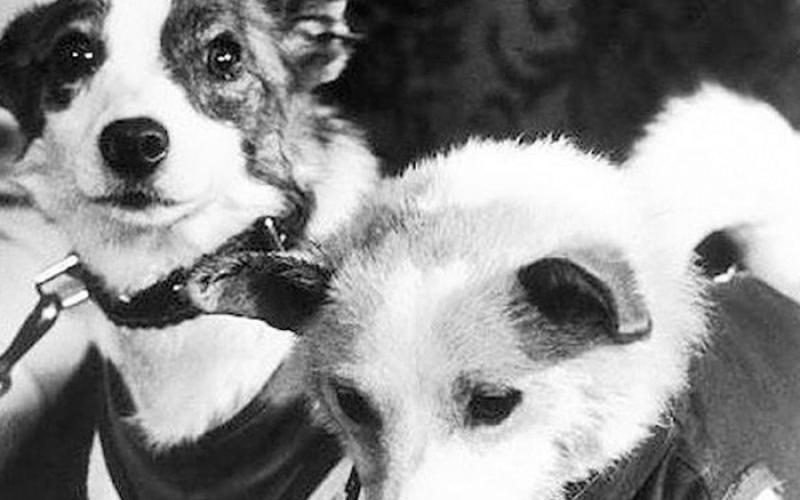It was a very sad story that moved millions of people. On November 3, 1957, on the second Soviet satellite, the dog Laika flew into space, which was no longer destined to return to Earth ...
It all started in 1948, when, on the initiative of designer Sergei Korolev, work began on determining the reactions of a highly organized living being to the impact of rocket flight conditions. After long discussions, the choice fell on the dog. It was decided to conduct research at the Kapustin Yar test site.
The dogs were trained for flight at the Air Force Institute of Aviation and Space Medicine.
For experiments, small dogs weighing 6-7 kilograms, aged from two to six years, were selected. They were supposed to have good health, high resistance to disease and resistance to adverse environmental influences. They tried to select girls in the "space squad". According to scientists, it was easier for them to sew sewage clothing.
A serious scientific program was also developed to train dogs for short rocket flights and long satellite flights. The head of this work was Vladimir Yazdovsky, one of the founders of Russian space medicine and biology. First of all, the dogs were trained to wear clothes and eat from an automatic feeder. The dogs also had to be trained to be able to sit quietly in a small cabin for a long time.

On November 3, 1957, the satellite with Laika on board went into space. The telemetry reported that the launch g-forces pinned the dog against the container tray, but it did not twitch. The pulse and respiratory rate of the animal increased three times, but the electrocardiograms did not show any pathology in the work of the heart. Then everything gradually began to return to normal. In weightlessness, the dog felt fine, doctors noted "moderate physical activity."
The Soviet press was stingy with details about Laika. In the Western media, her flight became a real sensation. In newspaper articles, they admired the astronaut dog, and at the same time worried about her fate.
“The shaggyest, loneliest, most miserable dog in the world,” wrote The New York Times tearfully in its November 5, 1957 issue.

Later it became known that Laika died already at 5-7 hours of flight from overheating of the aircraft. And the satellite circled in space for another six months, "winding" around the Earth 2370 revolutions.
The news of Laika's death resonated with pain in the hearts of people, both in the USSR and around the world. There was even a wave of indignation. Western animal rights activists demanded an end to dog abuse.
Hundreds of letters poured in from Soviet citizens to the Kremlin with a proposal to award Laika posthumously with the Order of the Hero of the Soviet Union and give her a military rank.

At the end of 1948, on the initiative of Sergei Pavlovich Korolev, work began on determining the reactions of a highly organized living being to the impact of rocket flight conditions. After long discussions, it was decided that the “biological object” of the research would be a dog. The State Commission for the organization and conduct of animal flights on rockets was created, and on the recommendation of the President of the USSR Academy of Sciences Sergei Ivanovich Vavilov, Academician Anatoly Arkadevich Blagonravov became its chairman.
Research was carried out at the Kapustin Yar test site during launches of so-called "geophysical" or "academic" missiles ("scientific" modifications of the first Soviet ballistic missiles). The first flights with dogs were carried out on the R-1A rocket (“Annushka”, as she was called at the training ground). A container with animals and scientific instruments was placed in the head of the rocket, which was separated and lowered by parachute. Subsequently, modifications of the R-2 and R-5 missiles were used, the maximum lifting height was 47 km.
Despite the fact that these experiments were in the very early stages, on October 12, 1957, it was officially decided to launch a second artificial satellite on the occasion of the fortieth anniversary of the October Revolution. It was required, without any preliminary development, to create an experimental space laboratory that would make it possible to study an astronaut dog that was not returning to Earth. There was little time to develop a new satellite, and it was not possible to improve existing life support systems in such a short time.
It was decided not to separate the satellite from the central unit of the second stage of the launch vehicle in order to use the Tral system for transmitting telemetry, which is already on the second stage (in fact, the entire second stage was a satellite). Therefore, the experiment with Laika turned out to be very short: due to the large area, the container quickly overheated, the dog died already on the first turns.
True, in any case, the death of the first living terrestrial creature launched into space was inevitable. There were enough sources of electricity to power the life support system for a maximum of six days, and a return to Earth was not envisaged - the technologies for safe descent from orbit were not developed.
Sputnik-2 was a conical capsule 4 meters high, with a base diameter of 2 meters, it contained several compartments for scientific equipment, a radio transmitter, a telemetry system, a software module, a regeneration and cabin temperature control system. Dog Laika was housed in a separate sealed compartment. Food and water were given to the dog in the form of jelly. The fan for cooling the dog started working at temperatures above 15 °C.
Technical and biological data were transmitted using the Tral-D telemetry system, which transmitted data to Earth for 15 minutes during each orbit. Two photometers were installed on board to measure solar radiation (ultraviolet and X-rays) and cosmic rays. No TV cameras were installed on Sputnik 2, and television images of dogs on Sputnik 5 (Belki and Strelki) are often mistaken for the image of Laika. Which were much more fortunate than Laika - and managed to return safely after a day spent in orbit.
Despite the fact that the dog lived in orbit for only a few hours, its stay in space confirmed that living organisms are able to endure the conditions of weightlessness. In addition, satellite measurements showed an increase in background radiation at high northern latitudes (i.e., a radiation belt was discovered), although the significance of these data was evaluated later.
Gagarin
PS. The mongrel Laika entered the history of space exploration: the Laika cigarettes, which later became quite popular in the USSR, were named after her,
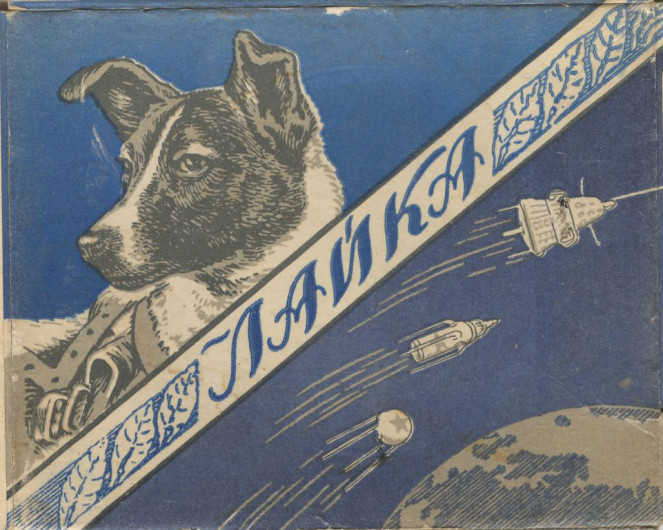

Photos of this famous dog can be found in a huge number of domestic and foreign books about space, postcards and stamps were also issued in her honor ...

Less well known to the general public is the first (there were several) Soviet commemorative badges in honor of Laika, which are no longer so easy to find.


